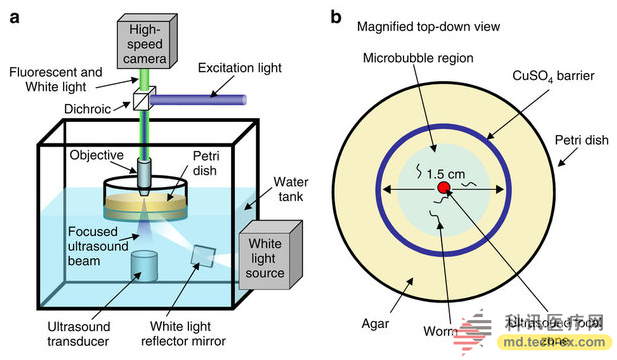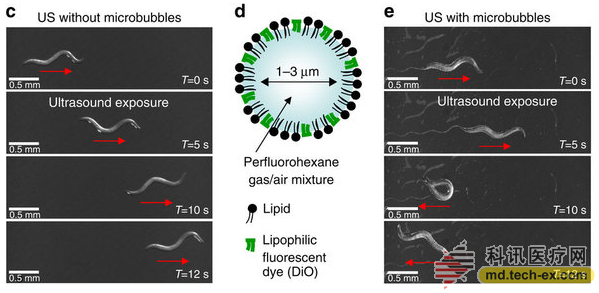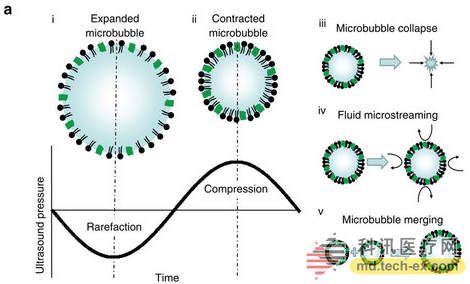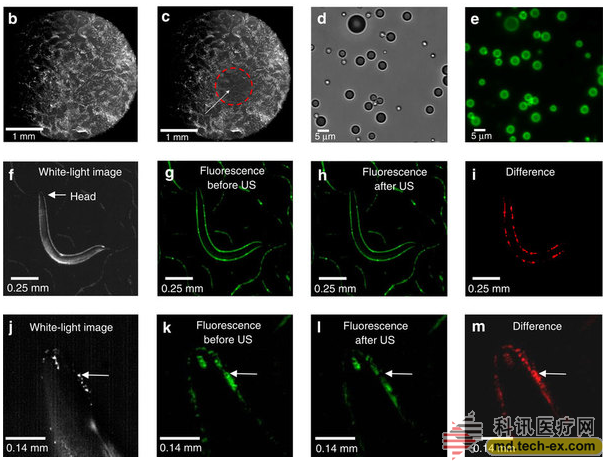Release date: 2015-09-23
Scientists have successfully used ultrasound to stimulate individual neuronal discharges in the worm brain. This "acoustic genetics" technology, if it can be successful in large animals and even human bodies, will have a wide range of application prospects, and can also be used as a research direction for new biosensors or true cochlear implants. As a safe, economical, portable and fast imaging method, ultrasound has been widely used in various fields of the clinic and involves almost every human organ and every medical branch. In recent years, there has been an urgent need for early diagnosis and treatment of major diseases. Combined with the comprehensive development of physics, engineering and technology, scientists have proposed new technologies such as ultrasound molecular imaging, fixed-point administration, ultrasound neuromodulation and integration of diagnosis and treatment. Biomedical ultrasound will transform from simple imaging to accurate diagnosis, regulation and treatment. A variety of functions.


The core of this technology is the use of touch-sensing channel proteins, genetically engineered to transfer this molecular gene into the brain's nerve cells, which can open the ion channel and activate neuronal discharge.
Ultrasound is a very mild way of injury. It has great advantages as a stimulating neuron discharge. In addition, ultrasound has a strong penetrating ability and can penetrate deep into the brain. This is also a great advantage for large animals. The optogenetics technology that began 10 years ago has become a commonly used neuron stimulation method in the field of neuroscience, but the use of optical fibers to introduce light into the target area will inevitably lead to tissue damage. Sreekanth Chalasani, a neuroscientist at the Salk Institute for Biological Research in California, is the head of the research. The research paper was published today in Nature Communications. They hope to produce channel proteins that can sense ultrasound at different frequencies in the future.
Jon Pierce-Shimomura, a worm researcher at the University of Texas, believes that this idea is very cool, and that this non-invasive technique for stimulating neurons will open up a whole new field of research.


The source of this technology obviously comes from optogenetics technology, and it has the non-invasive advantages that optogenetic technology does not have, but it cannot replace optogenetics technology. The two technologies will combine with each other to form acousto-optic genetic technology. Will have an important impact on brain neuroscience research. According to this idea, scientists apparently are considering other similar stimuli, such as stimulating neurons with magnetic fields and electric fields, and stimulating neurons with acceleration.
Ultrasound technology is widely used in medicine, such as low-intensity waves for diagnosis and high-intensity waves for breaking stones and tissues. Scientists have recently become more interested in ultrasound-stimulated neurons. In 2014, Arizona State University William Tyler used ultrasound to stimulate the brain. However, in the past, ultrasound stimulation was performed on a certain brain region. The latest study is to activate specific nerve cells to open specific ion channels, and the accuracy is completely different. The protein used by the Chalasani group is a pain ion channel TRP-4. The ability of ultrasound to propagate in the air is not strong. Scientists put the worms in the water and add tiny lipid bubbles on the surface of the culture dish to generate vibration to amplify the ultrasonic intensity. By altering the expression of TRP-4 protein by different functional neurons, scientists can make worms change direction of activity or stop activity. They are currently experimenting with mice, and the mice themselves do not express TRP-4, so it is impossible to know if they can produce the same effect. They also found that there are other ion channels that are more sensitive to ultrasound.
Source: Science Network
Dried Broccoli,Dehydrated Broccoli,Air Dried Broccoli,Bulk Dried Broccoli,Dried Broccoli Beads
Jiangsu Tiankang Food Co., Ltd. , https://www.tiankangfood.com